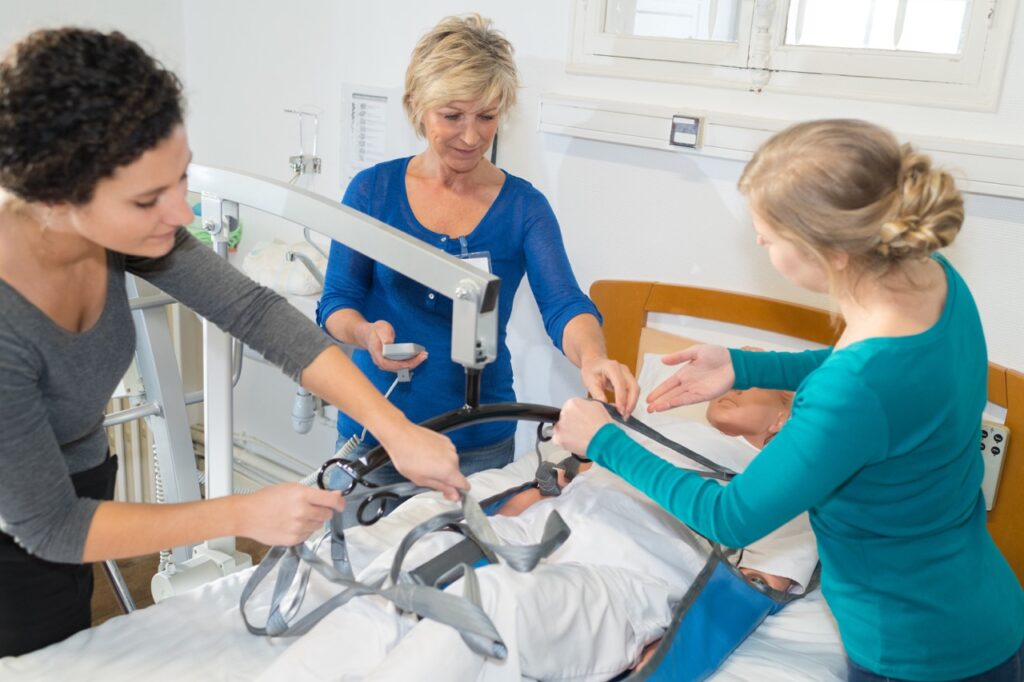With workplaces and life in general slowly returning to some form of normality over the coming weeks and months, the timing has never been better to remind ourselves of the importance of having an ergonomic set-up when working. With the ever-changing landscape we all find ourselves in, it can be hard to decipher what is right and what is wrong when it comes to our ergonomic set-ups. Luckily, we have a resident Workplace Ergonomics expert on hand at BodyRight Healthcare to take us through some key concepts when transitioning back to full-time office work or a combination of both. We spent some time with Jackie Kovacev – Team Leader and Osteopath at BodyRight Healthcare – and asked her to share her thoughts on the most important factors in an effective ergonomic set-up while working.
Now that lockdown has ended, it is time to start leaving our home desks and heading back to the office. This also means it’s time to start considering your desk set-up again. I know this is not the most fun topic in the world but I promise you, it is very important! Your habits can have a significant impact on how your body feels.
Here are my top five tips to help manage your desk-related ergonomic needs:
1. Take Regular Breaks from Your Desk!
This is by far the most important tip. Our bodies are not designed to stay in one position all day; they are designed to move regularly. Sitting in one position for long periods of time may result in certain muscles being put under strain and could result in discomfort or pain. These breaks do not need to be long but they do need to occur regularly. Find ways to take short walks within the office. For example, send your printing to the printer that is a little further away, go to the tap or water cooler for a hydration break or put alerts on your computer to complete a few stretches.
2. A Comfortable Chair Makes a World of Difference
There are a few things to consider when using an office chair. Check the height of your chair – you should be able to sit with your feet flat on the ground whilst your lower back is against the backrest. Ideally, your backrest should be slightly tilted back from neutral. The seat should clear both sides of the thighs when sitting and there should be about a two to four finger gap between the front of the chair and the crease of your knee. Not all chairs will allow you to adjust all of these areas but make as many adjustments as possible.
3. But What about the Desk?
Just like the chair, there are many factors to consider when organising a desk. Your desk should be at your approximate elbow height. Seated desks should be at elbow height when you are comfortably sitting and standing ones should also reach this level whilst you are standing. Some desks do not allow you to adjust the height – shorter people may need to place a small stool or footrest under their feet so the chair can be adjusted to the correct height in relation to the desk.
4. Don’t Forget Screen Height
Screen height can impact on your neck and shoulder muscles so it is important to have it right. Ideally, the top of the screen should be at your eye height when you are sitting comfortably upright. In a single screen set-up, you should be sitting directly in front of the screen. Working with multiple screens is a bit more complex so it is always best to seek advice from a trained professional before installing these.
5. Finally, the Keyboard and Mouse
Keyboards should sit approximately 10 to 15 centimetres in front of the body with the wrists in a neutral position. The mouse is best placed directly next to the keyboard. Ensure that you are not having to reach too far forward in order to use these items. You should feel comfortable when using them.
These tips are generalised and provide a basic overview to desk ergonomics. Setting up workstations is a highly individualised process so please use any available help from qualified people if possible. Most importantly, good luck with your return to the office!
For more health tips, advice and premium Allied Health Services, contact us today. With over four decades of clinical experience, our team is experienced and ready to find a service to meet your requirements. For more information give us a call on (03) 9558 9111 or follow us on across our social media channels.




